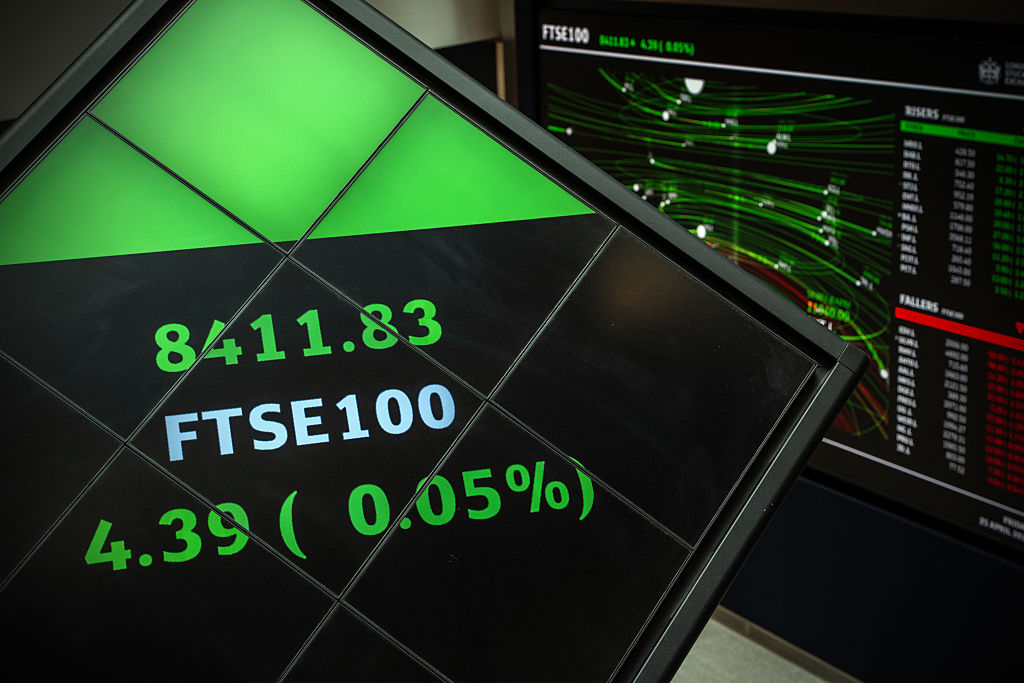A picks, shovels and pipelines play on the energy revolution
Tens of billions of dollars needs to be spent upgrading energy infrastructure. Smart investors who get in now will profit handsomely, says David C Stevenson.

Recently, I've looked for ways in which a contrarian might invest in the energy sector, if they expect oil prices to stay relatively high over the next decade. But whatever your view on oil prices or climate change, one theme emerging from my research is that the developed world faces little choice but to invest a lot of money in renewing and adapting our energy infrastructure.
Consider the impact of the US shale gas and oil revolution. No one wants to build nuclear power stations anymore because gas is so cheap. Demand for coal has plunged too, leaving US coal miners to export to Europe and Asia. But America and Canada have so much unconventional energy we're not even including Canada's tar sands oil that pressure is growing to export shale gas too.
However, exporting gas (and shale oil and tar sands oil) needs new pipelines: pipelines from north to south, from the mid-west to the eastern seaboard, and export pipelines to take oil to the west coast, not to mention the export facilities that send the stuff on to China. Yet there aren't enough of these pipelines. This is just a small part of a wider infrastructure problem. Renewable energy is growing rapidly in America. But how do you get wind power from the Texas Panhandle to the mid-west urban areas where it's needed? You need new infrastructure. And the existing US power system needs upgrading: some urban areas face blackouts with annoying regularity.
MoneyWeek
Subscribe to MoneyWeek today and get your first six magazine issues absolutely FREE

Sign up to Money Morning
Don't miss the latest investment and personal finances news, market analysis, plus money-saving tips with our free twice-daily newsletter
Don't miss the latest investment and personal finances news, market analysis, plus money-saving tips with our free twice-daily newsletter
So whatever energy ends up being used in the US (and in Britain) to generate power and fuel for transport, new infrastructure is needed. This huge opportunity will consume tens of billions of dollars in building costs and subsequent service charges. The already-vast energy infrastructure sector is funded heavily by equity investors, largely through tax-efficient structures such as master limited partnerships (MLPs). The opportunity for even greater deployment of capital has sparked bitter takeover battles as top infrastructure suppliers look to expand.
An MLP is just a variant on the real estate investment trust (Reit). The asset held is usually a pipeline that charges its users. These charges are banked to the business that owns the pipeline. Most of the income after costs is paid as dividends to the end MLP investor (there is also usually a general partner that charges for its services). The tax-efficient part comes in at the net income level. The MLP doesn't pay corporate taxes on the profit, as long as it is distributed to its shareholder partners (who must in turn pay their own taxes).
This creates a problem for UK investors: you must pay US withholding taxes on US dividend income, currently at 30%, unless you sign a W-8BEN form with your stockbroker. But if you use a tax-efficient UK structure (such as a self-invested personal pension) and you have the form signed, you shouldn't have to pay more than 15% in withholding tax for an MLP. Many of the top MLPs pay more than 5% a year, with some paying over 10%, which helps mitigate this charge.
The adventurous might combine the income from an MLP with another tax-efficient structure, a royalty trust, which invests in US onshore energy deposits. These are similar to an MLP: a specific fund is set up to invest in an asset, with profits paid to investors direct. But the underlying asset is usually a share in an energy deposit, with income paid via royalties. Dividends rates can be generous.
Of course, this generous income hasn't gone unnoticed by American investors, who are every bit as keen to find decent, well-supported incomes as we are. Prices for some MLPs have shot up in the last year, so I'd be cautious about leaping in over the next few months. But in the meantime, do some in-depth research, get your tax waiver set up, then wait for either a general stockmarket sell-off, or a drop in the price of Brent crude back below $90 a barrel (a distinct possibility).
Despite potential wobbles in the oil price, MLPs are well worth a look for long-term investors. I think the quality money will probably flow to the Kayne Anderson MLP (NYSE: KYN), followed by major rivals such as Tortoise Energy Infrastructure (NYSE: TYG). There's also a range of MLP and royalty trust-focused closed-end funds (which are a bit like our investment trusts). Some of these are structured as total return funds: the income is rolled up in the total fund value, which helps mitigate withholding tax. Options include the Cushing MLP Total Return Fund (NYSE: SRV) and the Nuveen Energy MLP Total Return Fund (NYSE: JMF).
A growing range of exchange-traded funds (ETFs) and exchange-traded notes (ETNs) track the major MLPs. I'd focus on the ETNs, which are effectively tracker instruments where you invest in the loan stock of the issuer. This sounds terrifically complicated, but in essence the issuer offers to pay the total return from an index of MLPs, with the counter party usually a loan note issued by a large investment bank. There is the risk that the issuer goes bust, but the upside is that the bank behind the IOU can effectively offer you the total return from the index without any tax paid at source. In effect, the income is rolled up in the return, and the ETN itself is usually fairly low cost.
JPMorgan's Alerian MLP index-tracking ETN (US:AMJ) has proved popular, but a better alternative might be a UBS-issued note called ETRACS Alerian MLP Index ETN (US: AMU). This ETN does not trade at a big premium to total book value as the JPMorgan one does. It produced an underlying income of just under 5% over the last year, and has risen in price by just over 10%.
If all this talk of US infrastructure assets strikes you as a bit too exotic, consider a home-grown infrastructure fund. Specialists like HICL (LSE: HICL) have long been popular with investors looking for an asset-backed income, largely produced by government payouts for local schools and hospitals. But many of these funds have been keen to diversify away from government social infrastructure. International Public Partnerships (LSE: INPP) and the 3i Infrastructure Fund (LSE: 3IN) have invested in everything from grid transmission networks (INPP) through to water utility networks (3i). As Britain improves its energy infrastructure, we should expect these funds to play a more active role. Meanwhile, you still get a well-backed income stream worth about 5% a year.
Finally, if renewable energy infrastructure sounds up your street, watch for out for a potential new fund listing in London: the Bluefield Solar Income Fund. According to analysts at Numis, it will "invest in UK-based large-scale income-generating solar assets". The fund "will target anIRR [internal rate of return] of 7%-9% net of fees and expenses through a focus on large-scale industrial and agricultural plants. The target dividend is 7p (4p in year one), paid via semi-annual distribution" and rising by inflation (as measured by the Retail Prices Index). The prospectus should be out this month and if all goes to plan (a big if), the placing should close in July.
Get the latest financial news, insights and expert analysis from our award-winning MoneyWeek team, to help you understand what really matters when it comes to your finances.

David Stevenson has been writing the Financial Times Adventurous Investor column for nearly 15 years and is also a regular columnist for Citywire.
He writes his own widely read Adventurous Investor SubStack newsletter at davidstevenson.substack.com
David has also had a successful career as a media entrepreneur setting up the big European fintech news and event outfit www.altfi.com as well as www.etfstream.com in the asset management space.
Before that, he was a founding partner in the Rocket Science Group, a successful corporate comms business.
David has also written a number of books on investing, funds, ETFs, and stock picking and is currently a non-executive director on a number of stockmarket-listed funds including Gresham House Energy Storage and the Aurora Investment Trust.
In what remains of his spare time he is a presiding justice on the Southampton magistrates bench.
-
 Electric vehicle drivers to be charged new per mile tax
Electric vehicle drivers to be charged new per mile taxElectric vehicle drivers will be forced to pay a 3p per mile tax, as taxation will be brought closer in line with petrol and diesel cars
-
 What does the Budget mean for the UK stock market?
What does the Budget mean for the UK stock market?Stamp duty holidays were set against tax relief cuts in Rachel Reeves’s second Budget. We assess the new measures that could impact UK stocks.